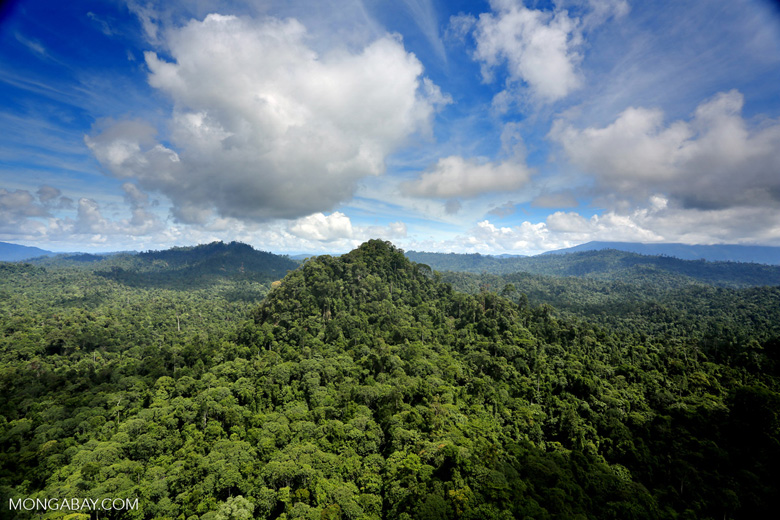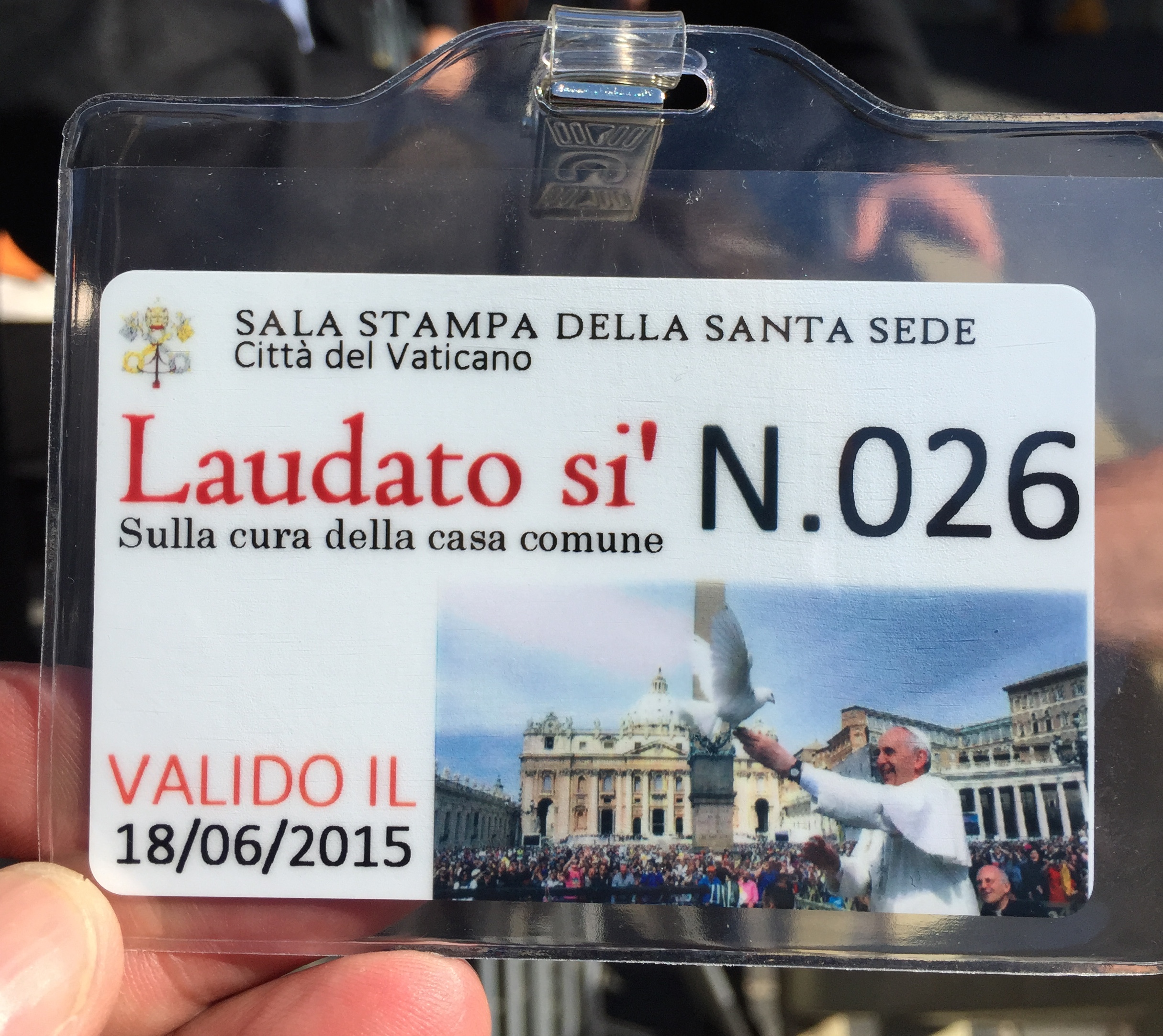
PARIS: At last, forests! — The final draft of the binding Paris Agreement on climate change directly and boldly addresses the necessary role of the world's forests, working in concert with carbon emission cuts, to slow the march of rising global temperatures.
The importance of forests is emphasized again and again throughout the 31-page agreement which mandates that all countries "conserve and enhance… sinks and reservoirs" — code words for forests and other ecosystems, including oceans and wetlands, that draw carbon dioxide from the atmosphere and store it.
The importance of forest inclusions in the agreement — unanimously approved in Paris by negotiators from 195 nations — cannot be understated, said Rosalind Reeve, a senior fellow in climate change and the environment at Ateneo School of Government in Manila, Philippines.
"This is very significant because the Kyoto Protocol specifically excluded forests," Reeve said in an interview with Mongabay. "It's historic. It includes a package of REDD+ elements which have been debated for more than 10 years. This agreement is a very strong signal for REDD+ in my view." REDD is an acronym for Reducing Emissions from Deforestation and Forest Degradation.
Reeve's enthusiasm is supported by the language in the text, specifically, Article 5 sections 1 and 2:
Parties should take action to conserve and enhance, as appropriate, sinks and reservoirs of greenhouse gases … including forests.
parties are encouraged to take action to implement and support, including through results-based payments… [and] policy approaches and positive incentives for activities relating to reducing emissions from deforestation and forest degradation [REDD+], and the role of conservation, sustainable management of forests and the enhancement of forest carbon sinks in developing countries.
"The language in the agreement re-emphasizes how central forests are to the climate solution," said Pipa Elias, senior adviser with The Nature Conservancy. "Along with REDD+ in the agreement, we heard a recommitment for government and the private sector to support forest conservation."
At its most basic level, REDD+ enables rich, industrialized countries such as Norway, Germany and the United Kingdom to pay forested tropical countries such as Brazil, Indonesia, the Democratic Republic of the Congo, Colombia, Peru and others to keep their rain forests standing, rather than log them to make way for cattle ranches or other agricultural purposes.
As the 21st UN Climate Summit opened on November 30th, Norway, Germany and the UK pledged $5 billion to REDD+ programming up to 2020. They will be entitled to claim carbon offsets based on the amount of forests that are preserved.
The forest inclusion was not pre-ordained two weeks ago as COP21 opened in Paris. It just wasn't necessary, many developed-country delegates said, since REDD+ details had mostly been hammered out at past meetings.
Not so, argued delegates from the Coalition for Rainforest Nations, led by Panama. They seeded early drafts of the draft document with as many mentions of forests, and as many allusions to REDD+ as they could. They were playing the odds, believing that the more references they included, the better the chances that some would survive the grueling, daily round of edits and wish-list eliminations.
"There was real tension there," Reeve said. "But when both sides finally sat down and starting talking, they resolved it pretty easily."
Still, after 20 years of UN negotiations, why put so much emphasis on forests now?
"It is essential that we reduce deforestation to zero," Reeve said. "We need to do the same with forest degradation [which selectively removes trees and biodiversity from forests, leaving them less intact and thus less effective as a carbon sink]. We need to preserve ecosystems. All of that will help us to [reach] 1.5 degree C, and stay under 2 degrees C [of warming]. If we don't [preserve forests], we can't. It's that simple."
Average global temperatures have risen about 1 degree C (1.8 degrees F) since the mid-1800s. Most climatologists believe that if temperatures rise more than another 1 degree C by 2100, conditions on the planet could become radically different and disruptive, including sharp shifts in precipitation patterns, more severe storms and droughts, the disappearance of the Arctic ice cap in summer, Greenland ice sheet instability, and much higher sea levels.
The 1.5 degree Celsius climate conference goal was another COP21 surprise.
Climate hard-liners in developing countries have long argued that keeping global temperatures to a 2 degree C rise over pre-industrial levels was simply too hot, and would risk unleashing many of the worst destabilizing impacts of global warming — including perhaps the triggering of cascading effects and warming amplifications within nature, such as the melting of Arctic permafrost, that could release more greenhouse gases and push temperatures even higher.
The new Paris Agreement calls for "holding the increase of global average temperature to well below 2 degrees C [3.6 degrees F] above pre-industrial levels and pursuing efforts to limit temperature increase to 1.5 degree C [2.7 degrees F]."
Given that tropical forests store 25% of global carbon and harbor 96% of the world's tree species, it is clear that REDD+ and other forest preservation and restoration policies will be vital if the world is to hit a 1.5 degree C target.
"You have this separation between the community that cares for the atmosphere [and emission cuts] and the community that cares for the forests [and sequestering carbon]," Reeve asserted. "But you can't separate them; both are critical. This is what we've been saying for the past eight years, ever since we starting developing REDD+ as a policy for preserving forests."
In a statement, Donald Lehr, a consultant to the REDD+ Safeguard Working Group, praised the sweeping breadth of the COP21 accord: "The Agreement Preamble presents critical moral, ethical and ecological framing for the pact. It highlights human rights, including the rights of indigenous peoples, and draws attention to 'the importance of ensuring the integrity of all ecosystems'. This framing is essential to ensure that we see the right outcomes for forests and people."
Chris Meyer, a senior manager on tropical forest policy for the Environment Defense Fund in Washington, D.C. added that, "The countries and NGOs requesting the political signal to ramp up REDD+ now have an explicit reference to it in the Paris Agreement. There should be not a shred of doubt [about] REDD+'s role in the post-2020 climate framework."
Forest advocates and REDD+ backers leave Paris with a sense of optimism not previously felt in earlier COPs. But Reeve isn't celebrating. Not yet.
"The proof will be in the implementations of these policies in the years ahead," she said, "and in the reporting systems to measure accurately whether forests are indeed being preserved."




